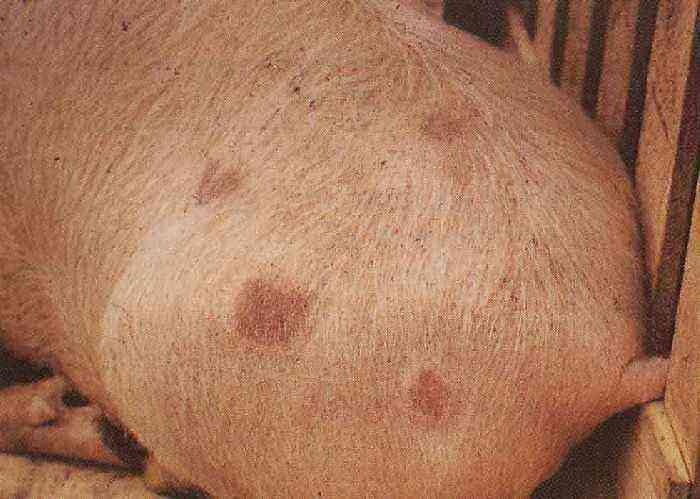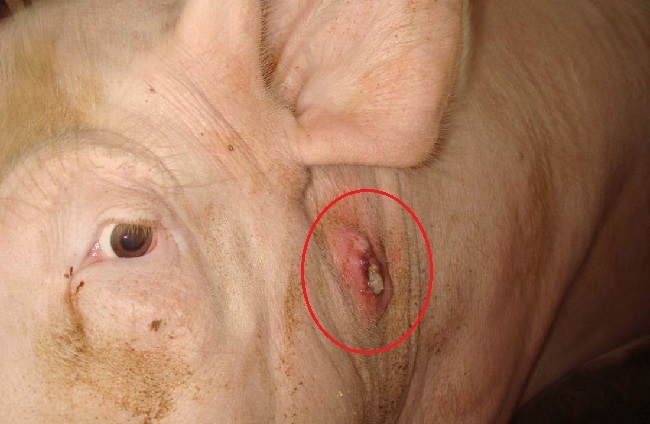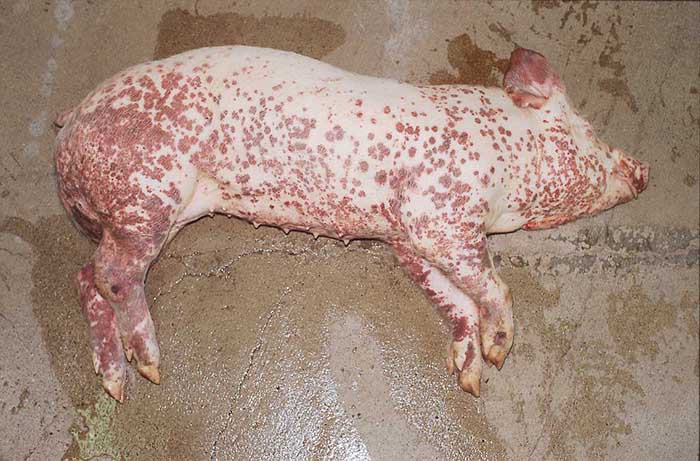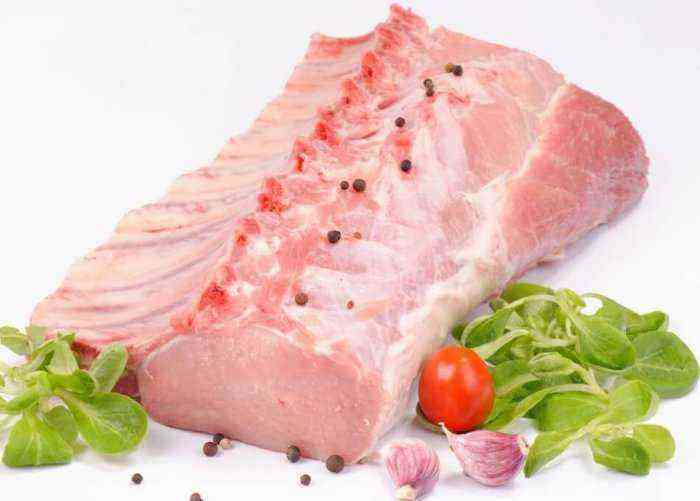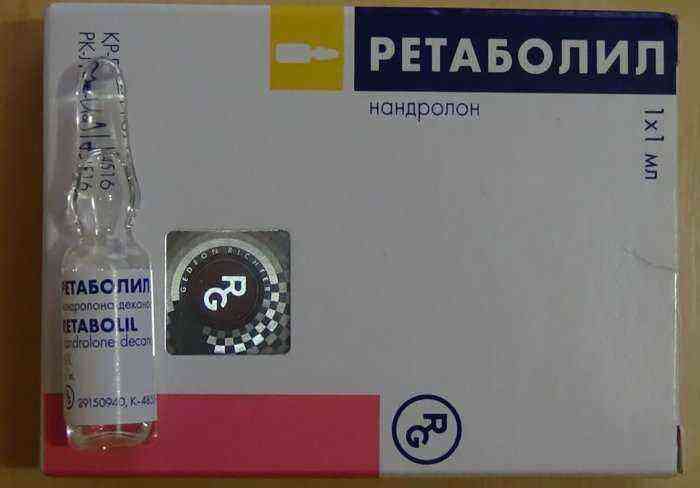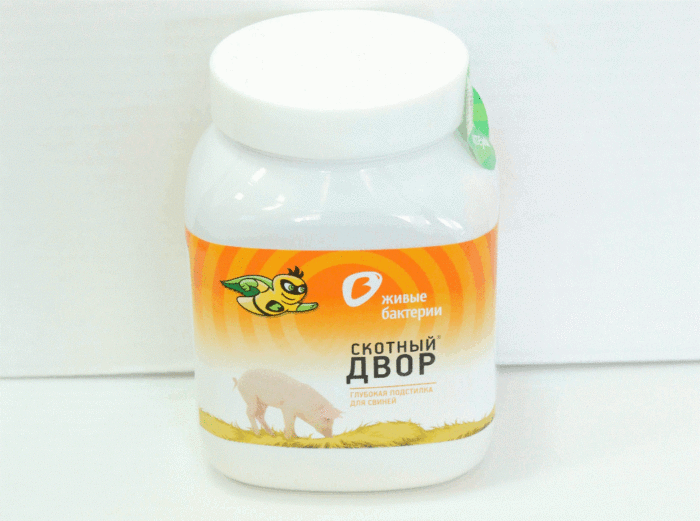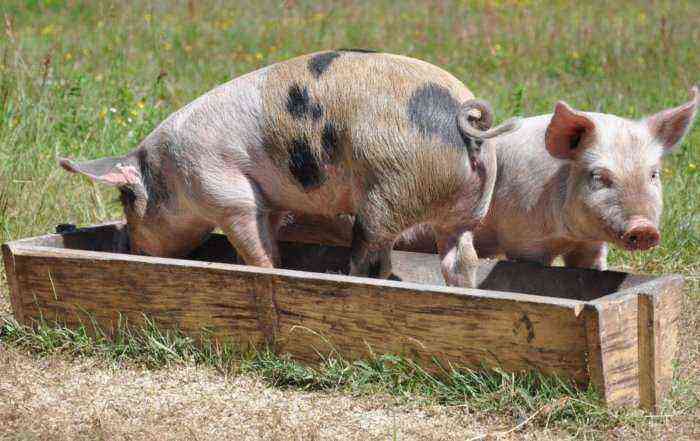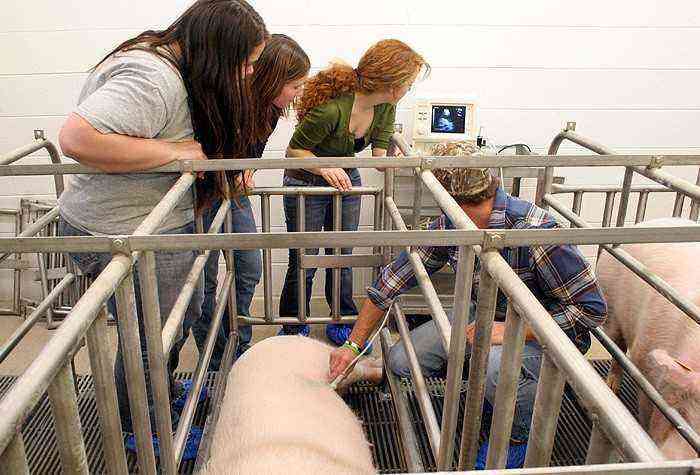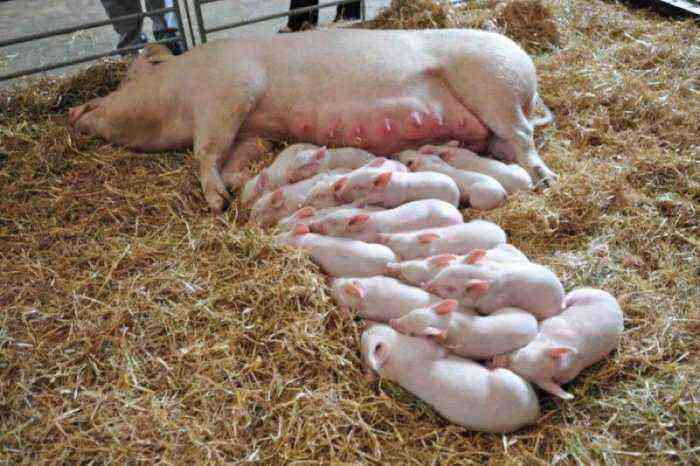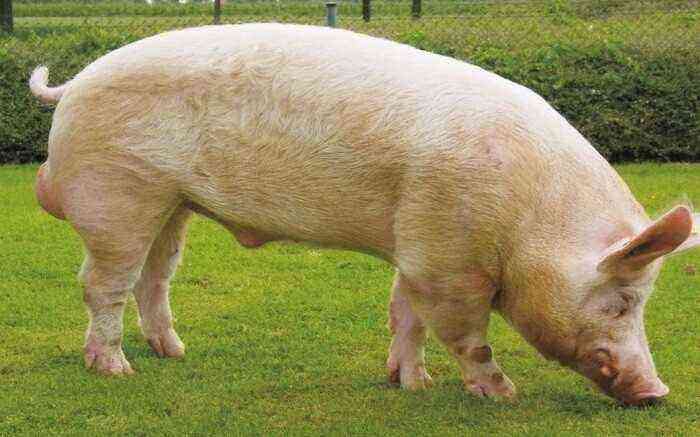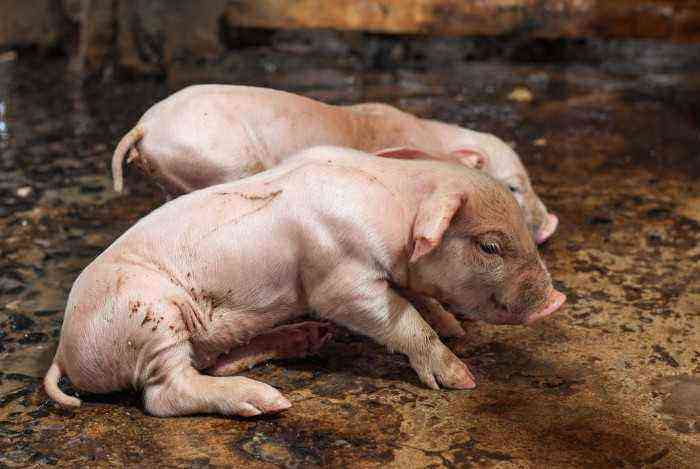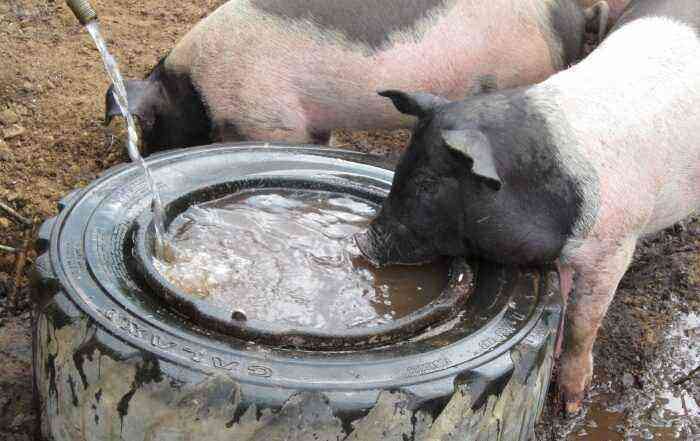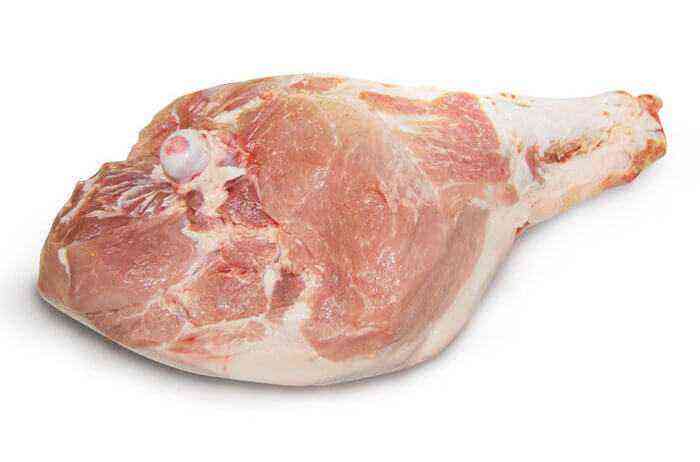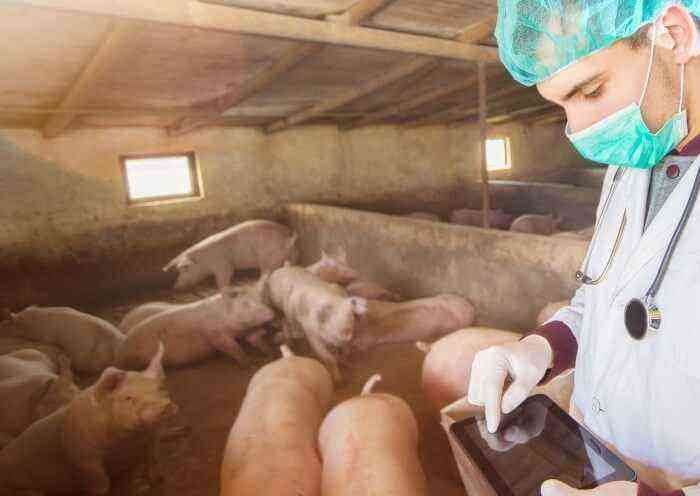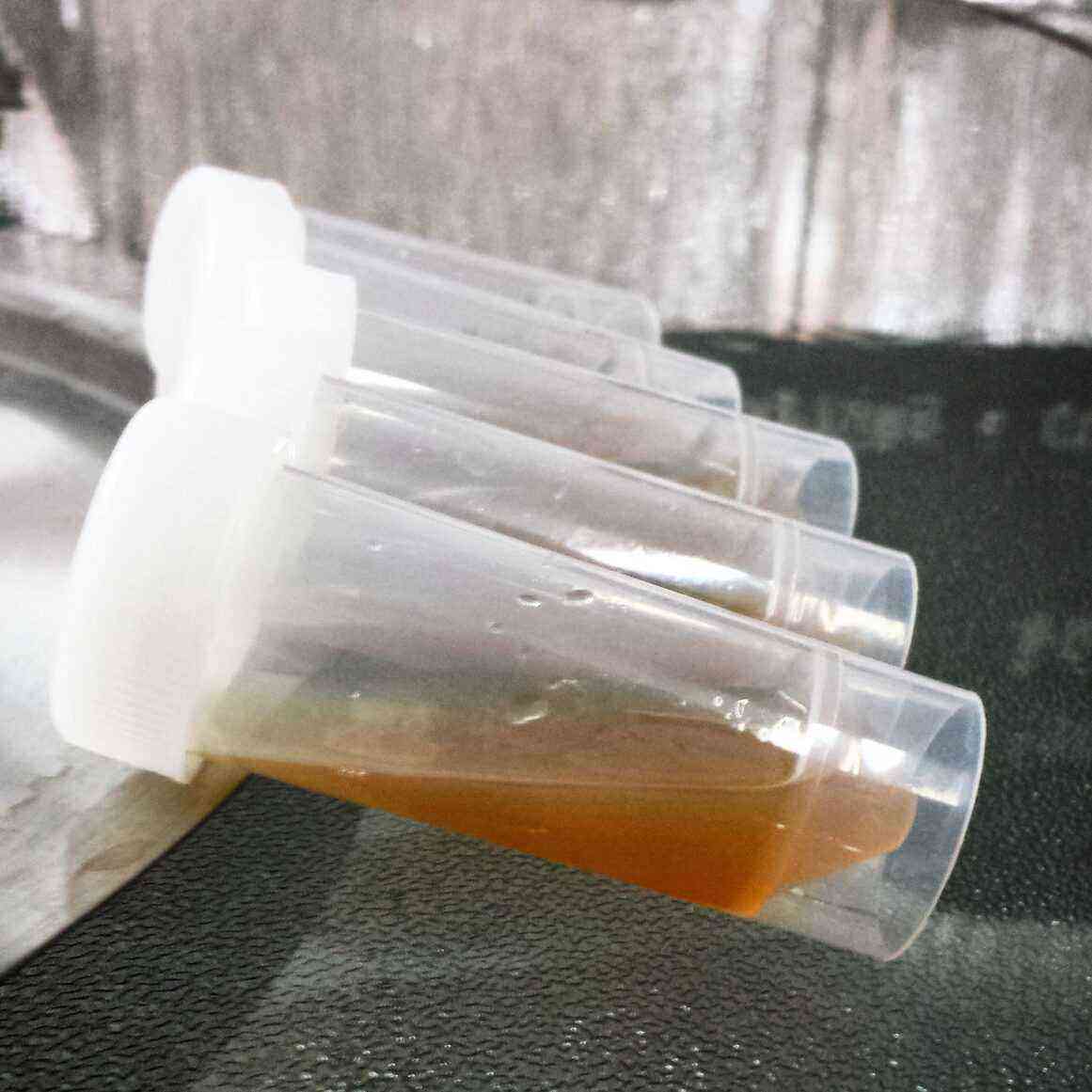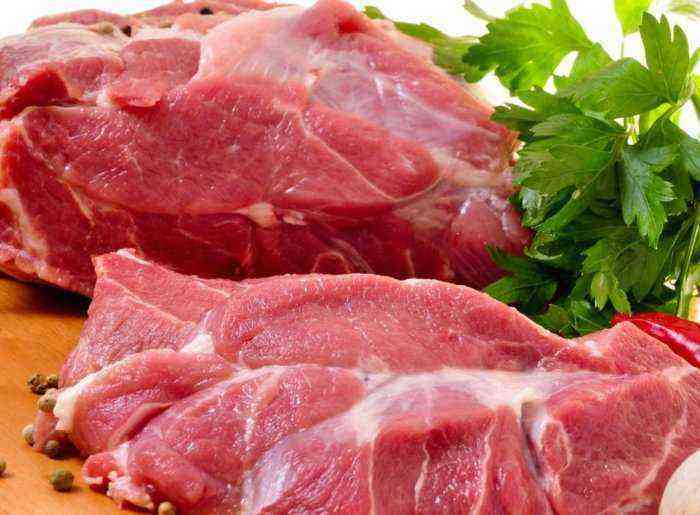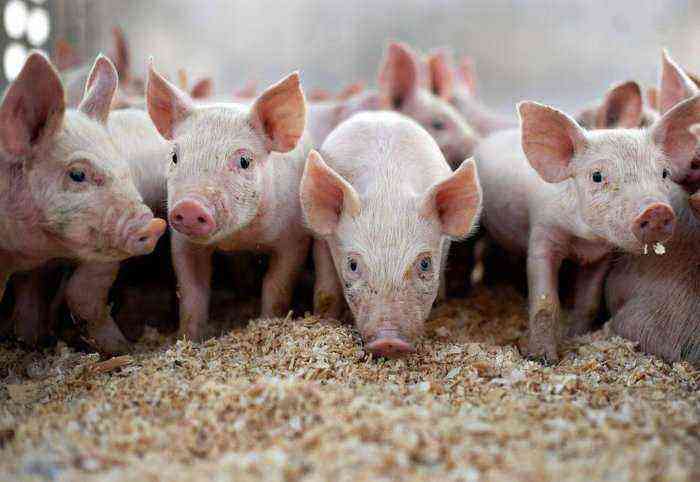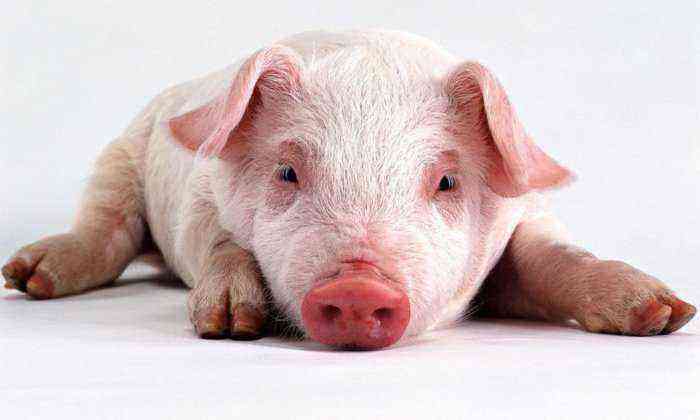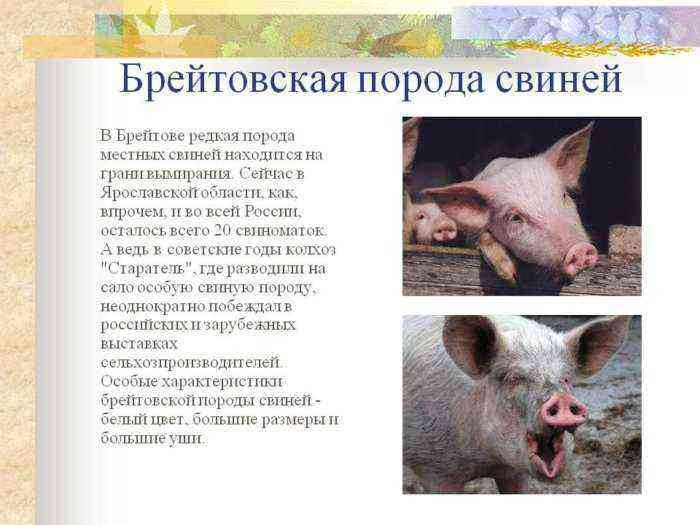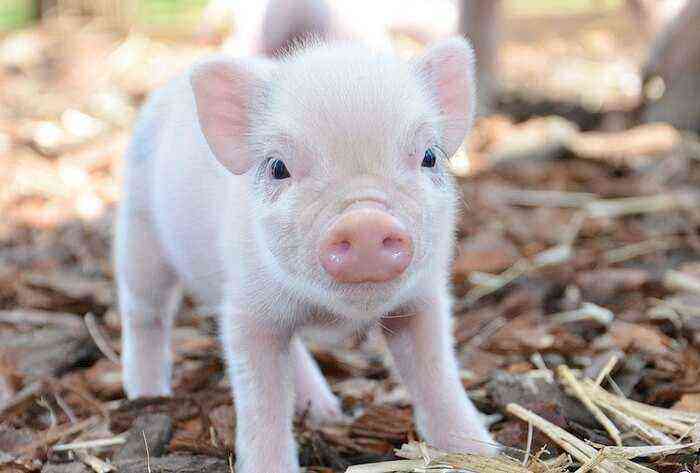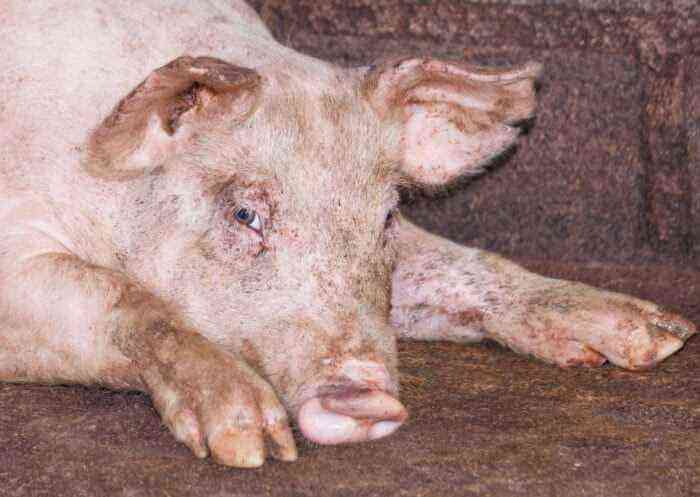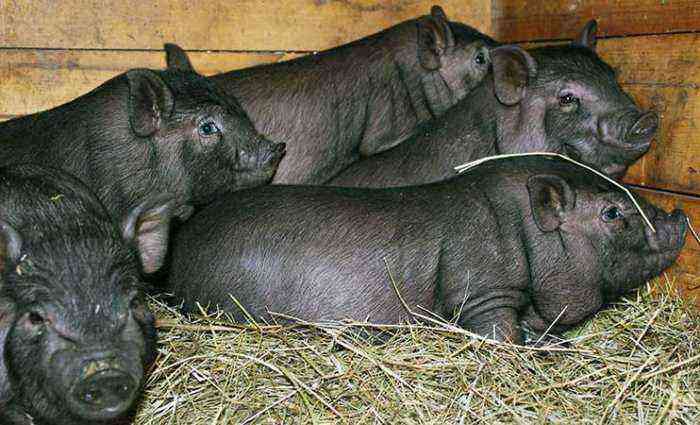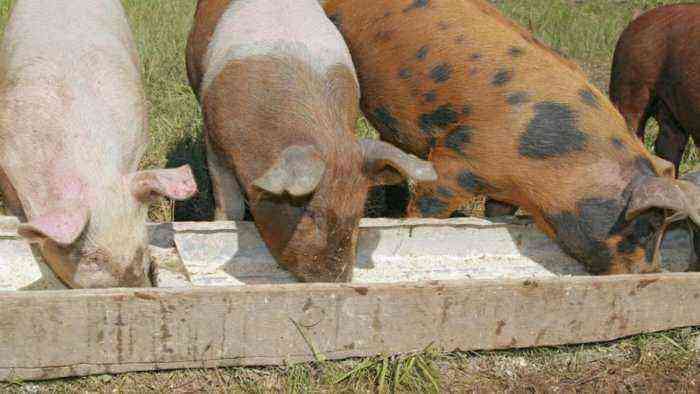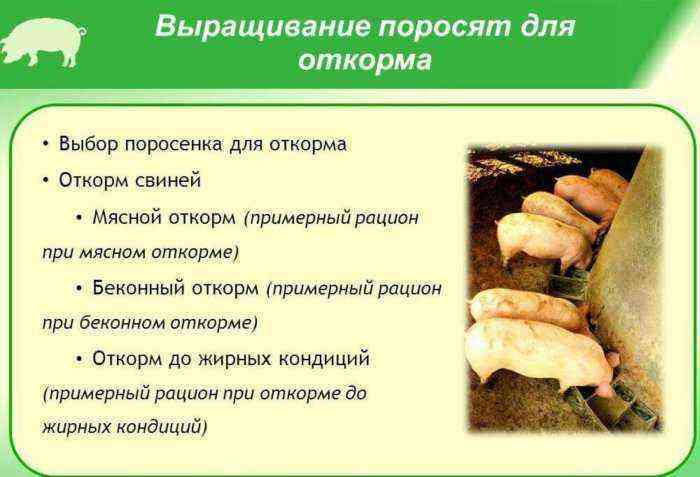Red spots in pigs appear due to various health problems. If the farmer noticed them in an animal, then a veterinarian should be consulted. Over time, you can independently learn to recognize the disease, but it is imperative to contact a specialist, since many problems tend to provoke complications.
Skin spots on pigs
Causes of the disease
Health problems don’t just appear. They certainly have reasons that are most often associated with malnutrition, vitamin deficiency, poor animal husbandry.
Dermatitis
It appears in animals from four to ten months. It is formed due to:
- poor quality or poor nutrition of the animal;
- lack of vitamins B and A;
- excess calcium.
The problem is characterized by the appearance of spots (small or large – up to five centimeters). The animal’s body temperature rises, it becomes lethargic, diarrhea often occurs. If the disease is complicated by a purulent infection, then sweating of cloudy exudate occurs, the appearance of ulcers. In the chronic form, skin folds with accumulations of pus and dirt can be observed. Mostly spots appear on the abdomen, ears, inner thighs. Sometimes the disease manifests itself due to exposure to external stimuli (abrasions, abrasions), chemicals (alkali, lime, acid, urine, manure, drugs), thermal burns, radiation, invasive or infectious agents
Ringworm
This fungal infection affects the skin, the animal loses weight. It is considered contagious in relation to humans. It is provoked by several species of fungi of the genus Trichophyton. Spread of the problem can occur through food, water, bedding, care items, contaminated pastures. When sick:
Trichophytia of pigs
- hair falls out on the affected areas;
- reduced productivity;
- the animal becomes inactive;
- scratching occurs on problematic foci;
- tubercles form, which become scaly spots.
Scabies
The disease is considered contagious, it is transmitted not only to animals, but also to humans. Occurs due to exposure to scabies mites. Itching appears, redness forms on the combed places, which resemble an abrasion after a bite. The animal’s bristles fall out and the body is covered with a scab. The piglet stops playing, becomes passive, may show aggression or be naughty. The disease is transmitted by contact, through grass, human hands, care items. To prevent the problem, it is necessary to isolate sick animals and follow all hygiene rules.
Furunculosis
The disease occurs due to the appearance of staphylococcus aureus. Purulent painful outgrowths in an animal occur due to:
- poor hygiene;
- skin damage;
- beriberi.
Furunculosis in a pig
Vesicular disease
This is an acute virus that is accompanied by blisters on the body and fever. When the disease takes serious measures, as it can often hide a more serious problem – foot and mouth disease. The causative agent is an enterovirus that conventional disinfectants cannot eliminate. Animals become infected regardless of age. The problem is spreading very quickly. It provokes the use of:
- waste;
- feed;
- non-decontaminated pig products.
Enterovirus enters the body through the wounds of the extremities. With the disease, the body temperature can reach 42 degrees. Acute and chronic forms are accompanied by diarrhea and lesions of the central nervous system, subsequently the death of the animal.
Ringworm
It is difficult to save any animal from this pathology. The problem is provoked by parasitic fungi. On the skin of a pig, spots and shortening of the bristles can be observed. Most often, the problem occurs in young animals. It is transmitted through contact with a sick animal, through care items and equipment. Infection can come from humans or rodents. Sick pigs are isolated, equipment and premises are cleaned and disinfected.
Mug
The problem is provoked by the bacterium Ery-sipelotrix isidiosa. With it, spots appear on the back and body of the animal, it refuses to eat. The disease can occur with constipation and vomiting. Most often it affects pigs between the ages of three and twelve months. Piglets fed on mother’s milk are resistant to the problem. She delivers through:
Pig’s erysipelas
- meat;
- by-products obtained from pigs;
- soil;
- water;
- infected inventory.
Most often, pigs suffer from the problem in summer, spring and autumn. The rapid course provides for the absence of erythema, signs of encephalitis, weakness. Body temperature can reach 42 degrees. The pig develops conjunctivitis. The problem must be recognized as early as possible, since the outcome from it is most often fatal.
Treatment
All of the above diseases must be eliminated without waiting for disastrous results. Any therapy provides for the normalization of the animal’s nutrition:
- improving the quality of food;
- adding vitamins and macronutrients.
When stains are obtained as a result of injuries, it is necessary to make lotions with a solution of furacilin. For this purpose, you can use prednisolone ointment or tetracycline. When the sores fester, the wounds are washed, bandages with streptocide and norsulfazole are applied to them. Sometimes a specialist prescribes special ointments or emulsions for the rapid healing of redness.
When infected with parasitic fungi, intramuscular vaccines are prescribed. Sometimes a veterinarian recommends treating wounds with brilliant green, salicylic alcohol, or iodine. In some cases, antibiotics cannot be avoided.
Redness in pigs is quite common. The specialist will help to recognize the disease and draw up an adequate therapeutic regimen. The farmer, on the other hand, must create the proper conditions for the pet, provide care and care until complete recovery.
https://youtu.be/lmojS8VTbaY
